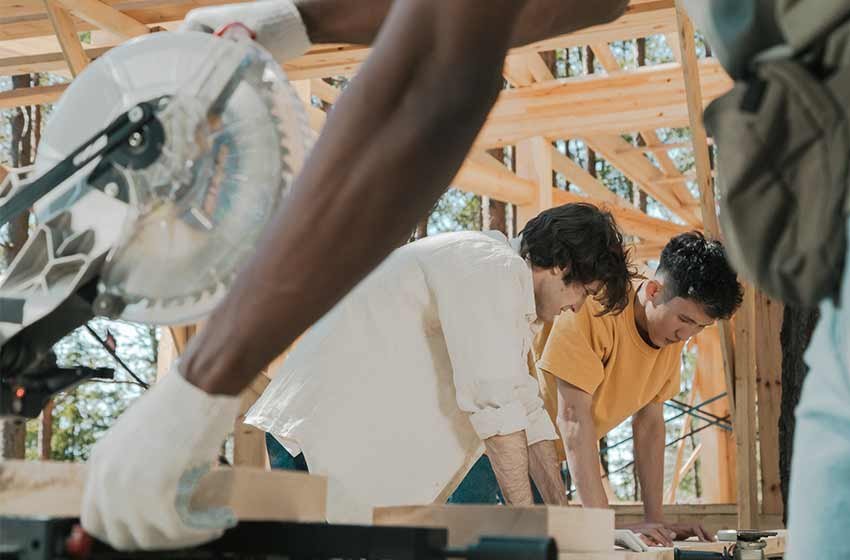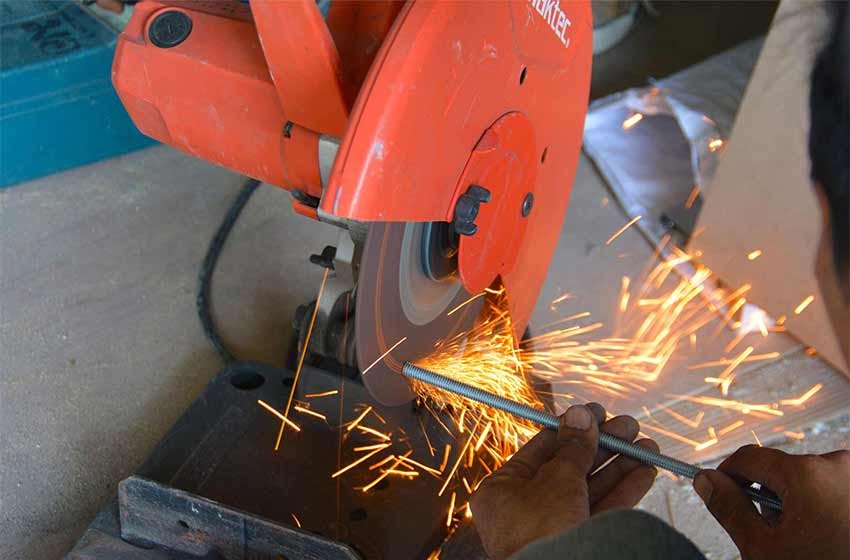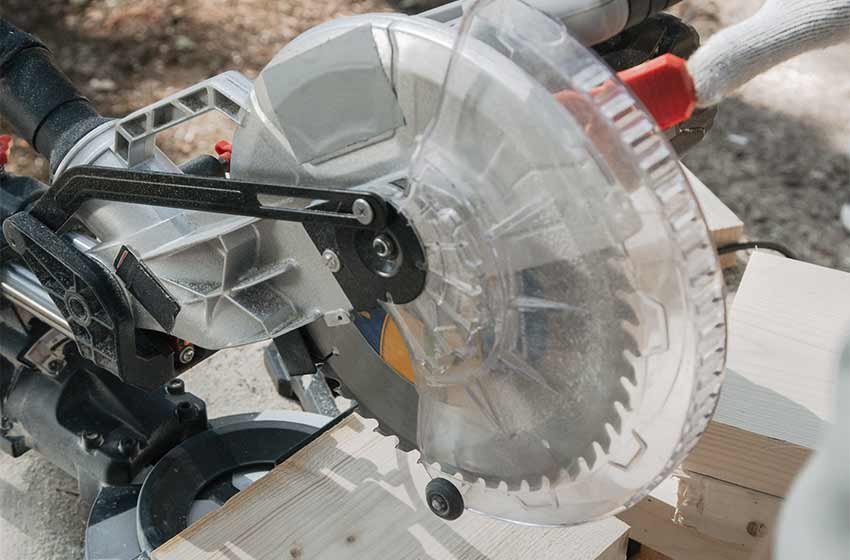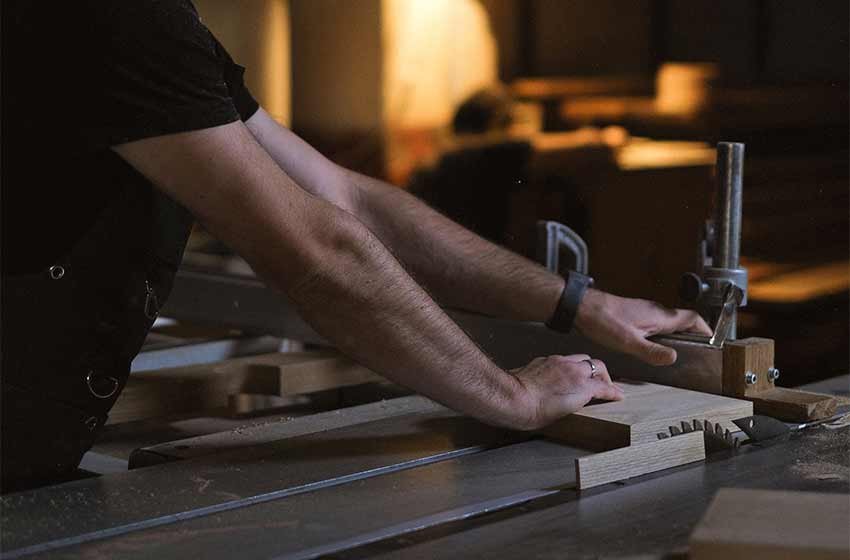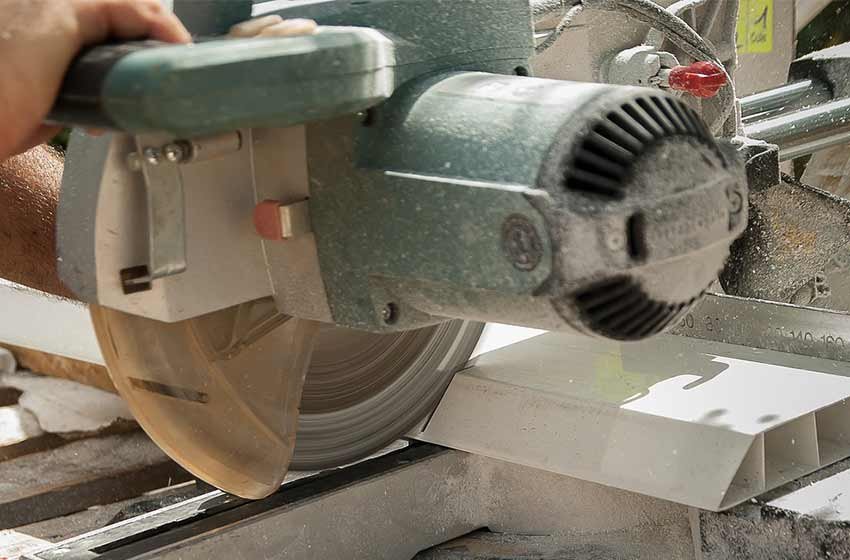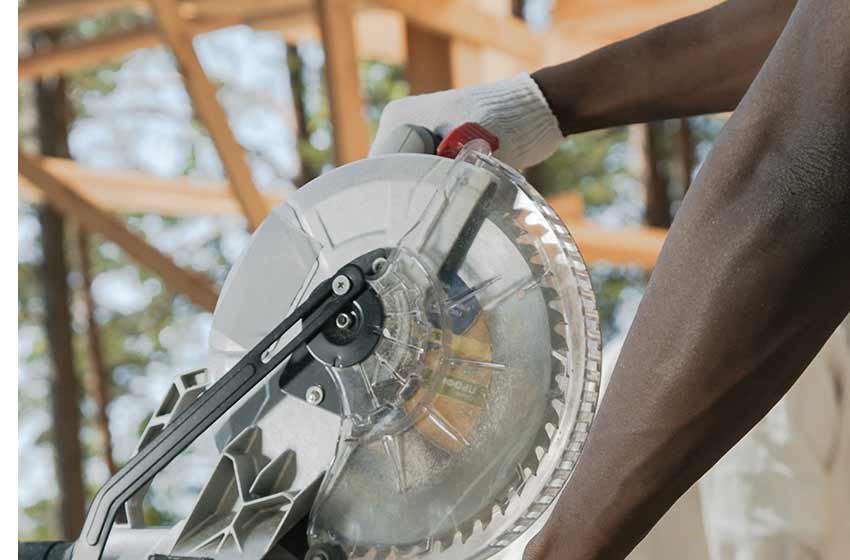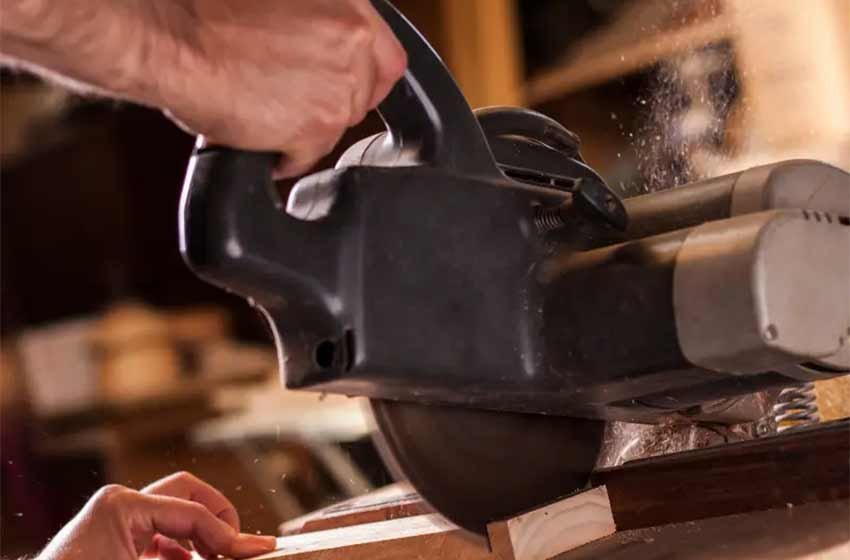Is It Possible To Use a Hammer Drill For Regular Drilling?
Buying a hammer drill is a great investment if you want to be drilling into tough materials with ease such as brick or concrete, but many of us wonder whether or not you can use hammer drills as regular drills too?
You can indeed use a hammer drill as a regular drill due to most hammer drills coming with a separate drill mode and drive mode, but it should be noted that hammer drills do differ from regular drills when it comes to design and cost which we will explore more later.
In our guide below we will cover the differences between a hammer drill and a regular drill, which drills can be used as a hammer drill, what you can use a hammer drill for and how they match up to regular drills.
Let's get into it!
What Are The Differences Between a Hammer Drill & Regular Drill?
Before we can get into whether or not you should pick a hammer drill over your regular rotary drill, it's a good idea to explore exactly what each type of drill does and how they work, as well as which drills can be used as a hammer drill to save you money.
What Is a Hammer Drill?
A hammer drill for drilling tough materials operates with a rotary motion and a pulsing hammer action which help it drive through a range of materials with ease that a normal drill can't.
This is essentially like a hammer but with a drilling rotary motion as the small-diameter drill bits get pushed through rather than bore a hole like a regular drill.
These types of standard hammer drill models come with different drill modes to make them function as your standard drill would, this means versatile hammer drills can drill precisely through softer materials and also work as a screwdriver would.
What Is a Regular Drill?
Regular drills operate with high-speed spinning and focus on the rotation of their powered drill bit in order to make holes through materials, these regular drills excel for uses on soft materials such as wood and timber as they focus on speed and not torque power as a standard hammer drill does.
Typical drills will also tend to use standard drill bits which do not have a hard tip at the end of the drill bit like a hammer drill has to support the blow.
What Drills Can Be Used a Hammer Drill?
As we now know that the majority of hammer drills can now be used as a regular drill, you might be wondering if this applies vice versa.
Well, some regular drills can in fact be used as a hammer drill, we have listed the two types below.
Combi Drills
Combi drills are a very popular type of drill driver on the market that can be used for drilling on a variety of construction materials, they tend to be cordless tools and comes with hammer action and screwdriver action making them the perfect tool for multi-purpose use.
SDS Drills
SDS drills are also known as the hammer drills which we have discussed above, except they differ slightly as these types of power tools cannot be used with all types of drill bits unless they are an SDS design, making their sole purpose for drilling on masonry or concrete.
What Can't Be Used as a Hammer Drill
Now we know that there are two types of drills that can be used as a hammer drill, there are also standard regular drill types that would not be able to perform a hammer action.
Rotary Drills
Rotary drills are basically your regular drill and used to be in every professional contractor tool kit until they got replaced by newer combi drills and cordless drill drivers.
These corded power tools typically don't have a hammer action or driver action as they don't have any torque controls, they are best used for standard high-speed drilling of small holes.
Drill Drivers
Drill drivers are a very compact type of tool, a standard drill driver will only be able to help your screw and drill small holes, they do tend to have adjustable torque for the driver speed but do not come with any hammer mode for heavy tool use.
What Do You Use a Hammer Drill For?
Hammer drills are great heavy-duty models for all-around use when you need to make a hole in hard materials, and with the right type of drill bit, they can even be used for drilling on brick and metal too.
To see if a hammer drill is worth it, we have listed the main types of uses for these powerful tools below.
Plumbing
Having a hammer drill for plumbing is an invaluable tool, there are many times you need to make holes in walls for piping or wiring, so having a hammer drill that can switch between regular drilling and powerful hammer drilling is very useful.
Metal Drilling
You can use a hammer drill to drill through metal with ease by switching to a regular drilling mode and using the right type of drill bit with an HSS material and lubrication, do not use your hammer drill on metal with the hammer function as this will just skid across the metal.
Brick Drilling
With the right bits for hammer drills and the hammer function, your drill can bore holes in bricks with ease unlike other regular rotary drills on the market.
Concrete Drilling
When looking to make holes in concrete floors and fittings, a hammer drill is your best friend, using a regular drill with a masonry drill bit will typically not be powerful enough for this job. Hammer drills will cope with drilling concrete much better as they have the level of torque needed.
Demolition
For small DIY demolition work, hammer drills fitted with a chisel work great for tearing down sections of a wall or any other material, these are an excellent tool in comparison to a jackhammer as they allow you to drill holes too.
Stone Drilling
Hammer drills are powerful enough to be used for drilling stone, they can even help you split boulders with their percussion blows, do not use them on granite countertops however as they could potentially cause cracking, instead try using a standard drill with a diamond core drill bit.
Can I Use a Hammer Drill As a Screwdriver?
We mentioned above that a hammer drill can be used as a regular drill as the majority of hammer drills come with different modes according to usage, one of these modes is a driver function too.
This means with standard drill bits on your hammer drill you can drive in screws with ease, do not try this however if your hammer drill does not have the appropriate mode for driving.
Hammer Drills Vs Regular Drills - Which Is Right For Me?
So now we know hammer drills can be used as regular drills with the right mode and some regular drills can be used as hammer drills, your probably asking yourself which type of drill is better to invest in for your tool kit.
We have compared the specs and uses of both a hammer drill and regular drill below to help you decide on which tool is right for you.
Hammer Drills
Hammer drills hold the main advantage over regular drills in that they can be used for drilling on hard materials like brick and concrete, they are very versatile thanks to their different modes and can be used for regular drilling too with standard drill bits.
Due to the high level of torque in these drills, they also drill much quicker than regular drills.
Drawbacks of hammer drills in comparison to regular drills has to be the price and weight, because of the high torque output these drills have, this often means they are more expensive. These powerful tools are very heavy in weight also so can be fatiguing to use in comparison with a regular rotary drill.
Pros
- A powerful application of torque.
- Drilling on concrete and bricks.
- Versatile.
Cons
- Expensive.
- Heavy to hold.
Regular Drills
On the other hand, regular drills are perfect for drilling through softer materials such as tile which a hammer drill would likely crack when used with the appropriate drill bit, these drills are lighter in weight and can be used with a great range of bits for wood drilling and more.
These drills tend to be more affordable and compact too, they also offer a way to drill through masonry with a masonry drill bit, but might not be as powerful.
Negatives of regular drills are the obvious lack of power for drilling through hard materials, so are restricted to typically DIY wood drilling.
Pros
- Affordable.
- Compact.
- Better for precise drilling on soft materials.
Cons
- Not powerful enough for drilling hard materials.
- Even when used with masonry bits they might not be strong enough.
Conclusion - Which Drill Is Worth It?
Overall, the type of cordless hammer drills or cordless rotary drills you choose comes down to the work you do. For example, if you do a lot of DIY work that can involve anything from drilling small holes to demolition, it would be wise to invest in a hammer drill that can do all.
However, if you just want a standard tool to perform basic drilling in soft materials with, it's better to go with regular handheld drills to save you money.
How To Use a Hammer Drill
If you have decided that corded hammer drills or cordless hammer drills might be the better investment for your DIY rather than a regular drill with rotary action, it's worth checking out some important steps on how to use one of these popular tools types to get the best result.
- Step one - The first step to using your hammer drill is to make sure the corded drill or cordless tool is set upright. Wrap tape around your bit to the intended depth if your drill does not have a limit and select a low speed for better control, also set the device to forward or reverse depending on the work.
- Step two - Choosing the right drill bit for your hammer drill body is highly important, you want to make sure your drill bit is right for the material you are drilling, for example, you might need larger drill bits for harder material such as bricks and also check the quality of the drill bit material for the type of drill uses, some heavy-duty SDS hammer drills only take speciality drill bits.
- Step four - Holding your hammer drill right is very important, some modes have a two-handed operation for better control and balance, you want to ensure you are leaning slightly on the drill in a comfortable position to prevent blowback, not enough to make a larger hole than needed.
- Step five - During the drilling process you should ensure the professional hammer drills body stays balanced and perpendicular, never force the drill through if it gets stuck, instead remove it. Also, listen out, your type of drill works with quite a bit of noise, so without any, you know it is not working how it's meant to.
- Step six - After drilling, do not release the trigger of the power tool accessory until it is fully removed from the hole, failure to do so can damage the drill bit or the whole drill itself.
General & Safety Tips For Using a Hammer Drill
Using a hammer drill is pretty straightforward, but high-end models pack a lot of torque figures into one device, so it's very important you know how to use one safely in the best way possible.
We have listed our top general/safety tips below for functioning your new hammer drill.
- Use lubricant - Overheating your drill bit during hammer-assisted action can shorten its lifespan and the dust created from drilling materials such as tiles and concrete is not ideal for your health, so to prevent this, you can add some water during the drilling process to help minimise the dust and heat.
- Never force - Try not to put too much pressure on your drill when passing through the material as you can damage the percussive action and ruin the bit of your drill.
- Remove for dust breaks - Move the bit up and down for every 30 seconds of drilling to ensure you are cleaning the flute and dust from the device.
- Wear PPE - When operating a hammer drill you should always be wearing protective equipment such as goggles to prevent debris from flying into your eyes.
- Use the right bit - Using the wrong wood or metal drill bit in concrete or tile material will cause the bit for wood to overheat and potentially damage the motor of your hammer drill. Instead, use special drill bits in electric hammer drills that have suited diamond tips.
- Stop drill bit jam - To stop your drill from jamming in material, you need to ensure you break through the jam with a concrete nail rather than force your hammer to drill through and damage the device.
Can I Use a Regular Drill Instead Of a Hammer Drill?
If you are faced with a task that requires a hammer drill and you don't have one on hand, you might be wondering if you can get away with using your regular drill, and while this is not recommended, there are two ways you can try drill by using a masonry bit for small holes and a diamond core bit for larger holes.
We will get into more detail about these using these two ways below.
Using a Masonry Bit With Your Regular Drill
It is possible to drill into hard materials such as concrete with a regular drill if you use a masonry drill bit, these drill bits might break but can be resharpened, we have listed some tips for drilling with a masonry bit below.
- Check the concrete age - The older your concrete, then the harder the simplest action of drilling will be, so for drilling very old concrete, it might be best to go for a trusty SDS drill.
- Go slow - A standard drill is not as powerful as an SDS drill is, so you need to be more careful to not burn out the motor and go slowly, once you have drilled the smaller hole, swap out your masonry bit for a large one until it is the desired size.
- Use water - Keeping your drill bit cool on your regular drill is even more essential than doing so on an SDS drill as they are prone to overheating, make sure to use water to cool it down.
Using a Diamond Core Bit With Your Regular Drill
If you want to use a diamond core bit with your regular drill then you need to make sure your drill has a power of over 850 watts and that the drill has a safety clutch, diamond bits are a great material for using on concrete as it is extremely durable.
- Do not use on a hammer drill - Never use a diamond core bit on a hammer drill as it can cause the cutting edges to damage, these should be used only on a regular drill or regular drill mode.
- Try carbide core bits - Carbide core bits are durable and due to their steel design, make it easier to get through tough materials without a hammer drill.
Frequently Asked Questions About Hammer Drills Being Used As Regular Drills
How much does a rotary drill cost compared to a hammer drill?
This depends on the power of the model and brand, but hammer drills tend to be slightly more expensive and have a price ranging between £50-£100, while regular drills are between £20-£60.
What does BPM mean on a hammer drill?
BPM rating refers to the blows per minute on a hammer drill, the higher the BPM, then the quicker it will deliver a hammer action, therefore, drilling quicker. Most hammer drills can have a BPM of up to 4000.
Are there disadvantages to hammer drills?
Hammer drills are great power tools to have, there are a few drawbacks including their weight which is a little heavy and high price in comparison to your standard drill on the market.
What are hex shank drill bits for?
Hex shank drill bits are for use on 1/4-inch impact drivers and won't fit on a regular drill.
Can you use non-hammer drills on hard materials?
You can but you will need a diamond core bit or a masonry bit for the job, it is much preferable to use a hammer drill, however, as this is what they are designed for.
Which type of drill is best for drilling into wood?
The best kind of drill for drilling into the wood is a regular drill due to the high speed and rotary action.
Final Words
Overall, a hammer drill can be used as a regular drill, whether for drilling into wood or metal, providing it comes with a suitable drill mode and you use the correct standard bit for the material. Hammer drills might be slightly more expensive than regular drills but are great for any work that requires extra power such as demolition.
Some regular drills can be used as hammer drills too such as a combi drill, but we would not recommend trying to drill hard materials with a standard drill as you can damage the motor and bit.








